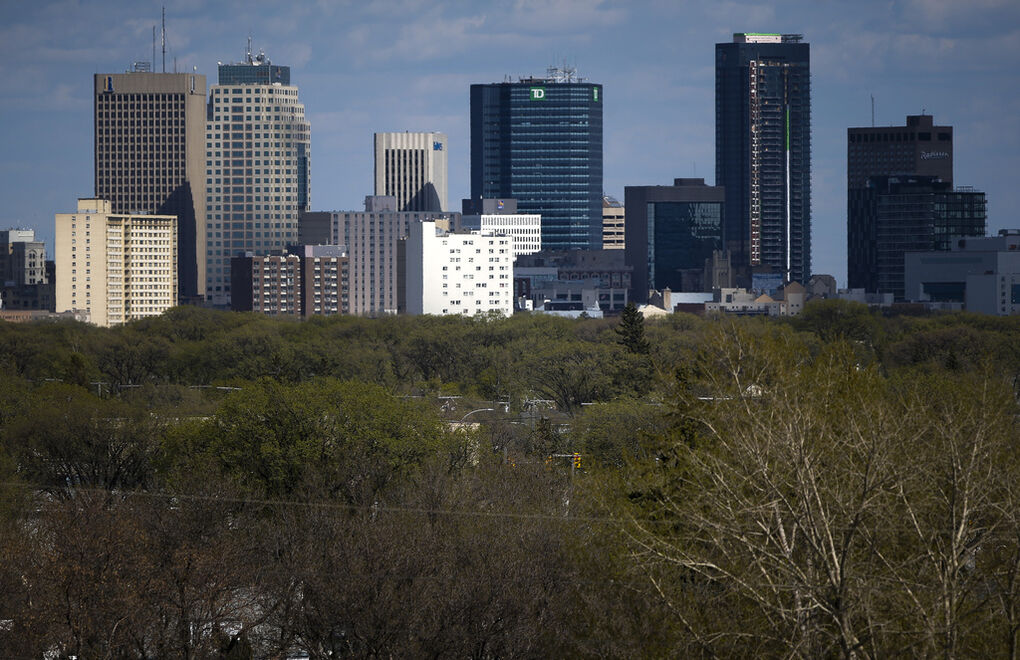Saturday, Jul. 2, 2022
Winnipeg Free Press – In order to decarbonize by 2050, Manitoba’s capital needs to make big changes. A brand new roadmap lays out the path — now it’s up to the city to see it through
The City of Winnipeg is taking steps toward a net-zero emissions future; a committee of council has unanimously approved an ambitious, multibillion-dollar ‘road map’, with hopes of getting there by 2050.
The Community Energy Investment Roadmap was commissioned by council in 2020. Meant to accompany the city’s broader guiding documents (OurWinnipeg2045 and the 2018 Climate Action Plan), the road map outlines a series of targets for reducing emissions in five sectors, as well as recommendations to help make the goals of the plan a reality. The committee also approved a plan to request annual progress reports from each department affected, and a motion to discuss hiring two additional employees to tackle work outlined in the report at the next budgetary consultations.
Climate and environment advocates lauded the report at a water, waste, riverbank management and environment committee meeting, celebrating its detailed financial modelling and holistic approach to emissions reduction.
“Universally, there is a lot of joy amongst (the climate advocacy) community as a consequence of receiving this report,” Climate Change Connection executive director Curtis Hull said during the June 28 meeting. The road map “is phenomenal; it’s exactly what we need right now.”
Still, the report is only a first step towards reaching the city’s emissions target. More work will be needed to detail how the plan can be accomplished and funded at a municipal level.
What’s in the report?
Winnipeg, like much of Manitoba, relies on hydroelectric power for the majority of its energy , making it one of the cleaner power grids in the country. To effectively curb the city’s emissions profile, the report recommends spending $23 billion over the next 30 years on a “reduce, improve, switch” approach in five key sectors, first reducing energy consumption, then improving efficiency of energy production and finally switching to low-carbon, low-emission energy sources.
The report focuses primarily on the city’s two largest emitters: transportation and natural gas heating.
Transportation accounts for the largest source of greenhouse gas emissions in Winnipeg — a city dominated by personal vehicle use and solo car trips. The road map highlights a federal commitment that will require all new car and passenger truck sales to be zero-emission by 2035 — but reducing emissions from vehicles will take more than just electric cars.
The road map recommends fully electrifying transit by 2035, increasing the share of trips made by transit or active transportation by 2050, and electrifying both municipal car fleets and private commercial vehicles between 2035 and 2050.
To get there, the road map outlines recommendations for building denser neighbourhoods with “superblocks” that limit vehicle traffic and ensure residents can access all their necessities within a 15-minute walk. The plan also recommends working with Manitoba Hydro and local businesses to develop charging stations in convenient locations around the city, investing $20 per person in active transportation infrastructure to make walking and cycling a safer and more reliable option, and pushing forward on the existing transit master plan to ensure all neighbourhoods are accessible by public transit.
The new Rapid Transit bike path between Jubilee Avenue and Markham Road in Winnipeg. The plan recommends investing $20 per person in active transportation infrastructure to make walking and cycling a safer and more reliable option.
Homes, businesses, institutions and industrial buildings contribute about 44 per cent of the city’s emissions, the plan notes, with about 93 per cent of those emissions traced back to natural gas heating. Curbing those emissions would require “deep retrofits” to improve energy and thermal efficiency, while also switching to efficient electric heat pumps (which work by exchanging heat from outdoor and indoor air).
The road map recommends retrofitting all residential buildings constructed before1980 by 2035; remaining homes would then be retrofitted by 2050. Commercial and industrial buildings should be retrofitted to improve energy efficiency by 50 per cent and rely on electric heat pumps by 2050. It also recommends substantially increasing the efficiency of new builds by lobbying the province to adopt net-zero building codes over the next three years.
As for other emissions sources, the road map sets a target of 78 per cent waste diversion by 2050, largely through organics collection and a reduction in construction waste, as well as a 25 per cent reduction of wastewater through improvements such as leak detection and encouraging a change in consumption habits.
Shifting to electric power for heating and fuel will put extra pressure on the city’s energy grid. Though efficiency upgrades, particularly in buildings, will help curb some of that increased power demand, the road map recommends diversifying the clean energy grid with rooftop solar power (installed on new buildings, parking lots and in community solar gardens), geothermal district energy (harnessing heat from sewer pipes and ground source heat pumps, for example), and biogas collection from landfills.
By 2050, the road map recommends diverting 100 per cent of methane emissions from landfills for power generation and ensuring 50 per cent of any building’s annual electricity load comes from renewable sources other than hydro, in order to diversify the clean grid.
Read the Winnipeg Free Press article.





